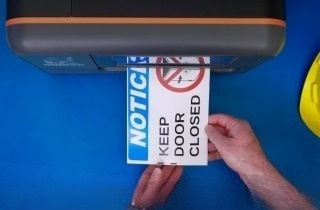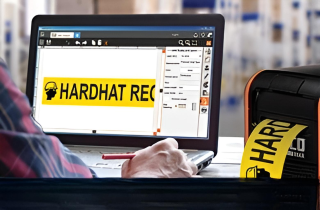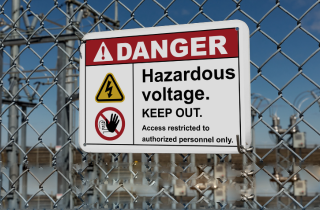Boost Workplace Safety with a Pre-Entry Checklist for Confined Spaces

Confined spaces pose serious risks, especially during construction and routine maintenance. These spaces, such as tanks, tunnels, and manholes, often have limited access and poor ventilation, increasing the likelihood of hazardous conditions. Preventing accidents starts with proper training, thorough entry preparation, and strict adherence to safety protocols.
OSHA's 1910 Safety Regulations, Appendix D of Subpart J, outlines permit requirements and safety procedures to protect workers in confined spaces. Understanding and following these regulations is crucial for maintaining a safe work environment and preventing serious incidents.
Confined Space Classification
Confined spaces are classified based on the presence of hazards and the level of risk they pose to workers. Understanding these classifications helps determine the necessary precautions before entry.
-
Non-Permit Required Confined Spaces: These spaces do not contain hazardous atmospheres or other serious risks, allowing workers to enter without a special permit.
-
Permit-Required Confined Spaces: These spaces contain hazards such as toxic gases, oxygen deficiency, or engulfment risks, requiring a permit before entry.
If any potential hazard is detected in a non-permit required space, it must be reclassified as a permit-required confined space. A thorough evaluation of the space and its potential hazards is essential before entry. The next step in the process is completing a confined space pre-entry checklist to document conditions and confirm whether a permit is needed.
Confined Space Pre-Entry Checklist
I. General Information
Space Type/Manhole Identification: _________________________________
Date/Time: _______________
Shop: _____________________
Employee Names: _____________________________________________
II. Non-Permit Required Confined Space Pre-Entry Checklist
|
Potential Hazard |
Yes, Identified |
Secured/Eliminated/Monitored | |
|---|---|---|---|
|
Atmospheric Hazard |
|||
|
Mechanical Hazard |
|||
|
Electrical Hazard |
|||
|
Thermal Hazard |
|||
|
Noise Hazard |
|||
|
Vibration Hazard |
|||
|
Fire/Explosion Hazard |
|||
|
Engulfment/Entrapment Hazard |
|||
|
Materials Harmful to Skin |
If any hazards remain active, the space must be reclassified as a Permit-Required Confined Space.
III. Atmospheric Hazard Data
If an atmospheric hazard is identified, a direct reading gas monitor must be used before entry:
| Measurement Location | O2 (%O2) | Explosive (%LFL) | CO (ppm) | H2S (ppm) |
|
Surface |
||||
|
3 Feet from Surface |
||||
|
6 Feet from Surface |
||||
| 6 Feet from Bottom | ||||
| 3 Feet from Bottom |
|
|
|
|
Acceptable Conditions:
-
Oxygen: 19.5% – 23.5%
-
Explosive Gases: Less than 10% LFL
-
Carbon Monoxide: Less than 25 ppm
-
Hydrogen Sulfide: Less than 10 ppm
Tester Signature and Date: ___________________________________________
Emergency Procedures & Rescue Plans
Even with precautions, emergencies can happen. Every confined space entry must have a rescue plan in place. Non-entry rescue involves using a retrieval system without sending in rescuers, while entry rescue requires a trained team to assist a worker in distress. In some cases, self-rescue is possible if the worker recognizes a hazard and exits independently. Rescue personnel must be properly trained and equipped with protective gear and retrieval devices to respond quickly and effectively in an emergency.
Required Safety Equipment
Workers entering confined spaces need specialized safety signs and equipment to minimize risks. Gas detectors continuously monitor oxygen levels and hazardous gases. Ventilation fans help improve airflow and reduce harmful gas concentrations. Harnesses and retrieval systems are essential for non-entry rescues, allowing workers to be safely extracted. Personal protective equipment (PPE), including helmets, gloves, respiratory protection, and communication devices, further enhances workplace safety by reducing exposure to hazards.
Common Mistakes & How to Avoid Them
Failing to conduct proper atmospheric testing before entry can expose workers to dangerous gases or oxygen-deficient environments. Inadequate ventilation may cause harmful gas buildup, making it essential to maintain continuous airflow. Communication breakdowns between entrants and attendants can delay emergency response, so reliable radio contact should be established. Lack of proper training is another critical issue—every worker involved in confined space operations must be adequately trained to recognize hazards, follow safety protocols, and respond to emergencies effectively.
Misidentifying a confined space as non-permit required can lead to workers entering without the necessary precautions, increasing the risk of injury. Using improper or damaged safety equipment, such as faulty gas detectors or harnesses, can compromise rescue efforts. Overlooking safety signs and warning labels may result in unauthorized personnel entering hazardous areas, putting themselves and others at risk.
Benefits of a Pre-Entry Checklist for Confined Spaces
Using a pre-entry checklist for confined spaces enhances safety and efficiency by:
-
Reducing Risks: Identifies hazards before workers enter confined spaces.
-
Ensuring Compliance: Meets OSHA requirements and avoids penalties.
-
Increasing Accountability: Documents safety steps to confirm proper procedures.
A well-implemented checklist minimizes risks and reinforces a safer working environment for all involved. By following structured entry procedures, using the right equipment, and preparing for emergencies, workers can safely navigate confined spaces while staying compliant with safety regulations.
The Importance of Safety Signs and Labels for Confined Spaces
 Clear safety signs and warning labels play a crucial role in preventing accidents in confined spaces. They provide immediate hazard warnings, access restrictions, and emergency instructions to workers and visitors. OSHA mandates proper signage for confined spaces, particularly for permit-required confined spaces, to ensure that workers are aware of potential dangers before entry.
Clear safety signs and warning labels play a crucial role in preventing accidents in confined spaces. They provide immediate hazard warnings, access restrictions, and emergency instructions to workers and visitors. OSHA mandates proper signage for confined spaces, particularly for permit-required confined spaces, to ensure that workers are aware of potential dangers before entry.
Marking confined spaces with highly visible warning labels helps prevent unauthorized access and reinforces compliance with safety protocols. Durable labels withstand harsh environments, including moisture, chemicals, and extreme temperatures, ensuring that safety messages remain legible over time. By placing hazard labels at entry points, facilities can reduce the risk of serious incidents and improve overall workplace safety.
DuraLabel Solutions for Confined Spaces
DuraLabel offers industrial-grade safety labels and signs designed to withstand the demanding conditions of confined spaces. From high-visibility warning labels to custom labels for outdoor environments, DuraLabel products help facilities meet OSHA compliance while keeping workers informed of potential dangers. These durable labels resist moisture, chemicals, and abrasion, ensuring long-lasting safety communication.
One standout solution is the DuraLabel Toro Max Industrial Sign and Label Print System. This portable, all-in-one printer allows teams to create custom safety labels on demand, without needing a computer connection. With a built-in touchscreen, the Toro Max is ideal for on-site confined space labeling, providing quick, professional-grade safety signage whenever and wherever needed.
Download our free OSHA Signage Quick Start Guide to guarantee your facility meets OSHA standards for confined spaces. This comprehensive resource provides a detailed site inspection checklist to ensure your facility is OSHA compliant. Have more questions about confined spaces? Call 1-888-973-2045 and a dedicated support rep can help with any challenges you may be facing!
Read Next:
Confined Space Hazards 101: The Basics
Related Resources

Study: Training Lacks for Immigrant Workers
A recent study shows that immigrant workers at smaller construction firms are less likely to have safety ...
Read
We Are All in This Together: Building a Safety Culture with Management Buy-In
Creating a safe work environment requires more than just following rules and providing training. It ...
Read
What Is OSHA 10? | OSHA 10 Certification |
The term OSHA 10 refers to the OSHA Ten Hour Training that is part of the OSHA Outreach Training Program. The ...
Read.png)





